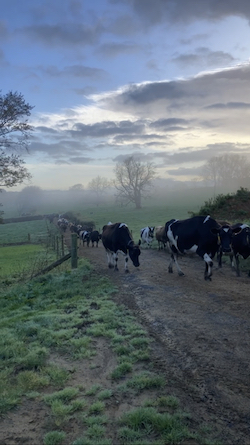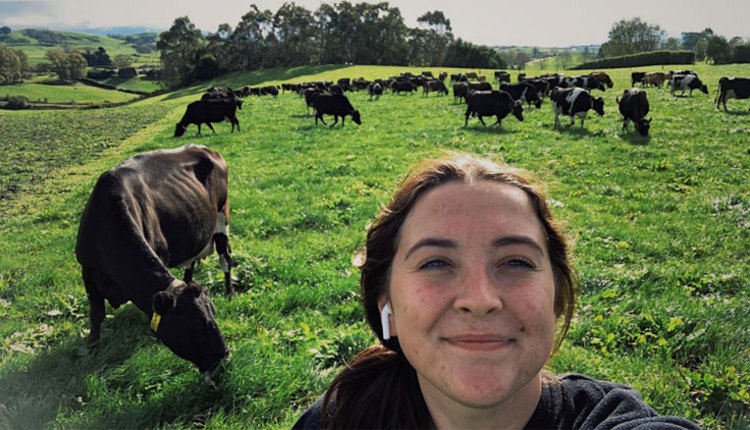
New Zealand is home to about 5 million people and 5 million cows. That is half the number of cows that are in the United States, all on an island not quite the size of California.
My study abroad experience in New Zealand has been nothing short of impressive these last four weeks. However, one thing that still holds true, no matter what part of the world you farm in, is the importance of milk production. In the United States, the average dairy cow produces around 3,000 gallons of milk a year; the average New Zealand dairy cow produces around 1,500 gallons.
This is mostly due to the pasture-based system New Zealand dairy farms run and the Friesian, Jersey, or Kiwicross (Friesian x Jersey) cows found on these farms. These animals are best suited for a grass-based diet and have a much smaller frame compared to the average Holstein cow back in the United States. These grass-fed animals are grazed on paddocks 365 days a year, rain or shine — and trust me, there is a lot of rain in New Zealand.
One of the main advantages of a grass-based diet is that most of the cows' feed is produced with little preparation, because the grass will grow on its own. The cows are brought in once a day to be fed a total mixed ration (TMR) consisting of palm kernel (a by-product of palm oil), maize (corn silage), lime flour, minerals, and sometimes kiwis, a treat the cows thoroughly enjoy.

My background in milk production before this summer consisted of working in various tie stall and freestall barns, so adjusting to a grazing herd has been a learning experience. Compared to the large barns and equipment back home, I have grown a love for the simplicity found in dairy farming in this part of the world. There is no need for a barn to hold hundreds of cows in this climate. The largest equipment on a standard dairy farm includes a medium-sized tractor, a mixer, and perhaps a skid loader if you are lucky.
In New Zealand, it is rare to drive down a road without seeing any dairy cows on either side, a sight I have grown fond of. Back home, the number of small farms is declining, so it brings me comfort knowing that family dairy farming is still thriving in other parts of the world. The sense of community and passion in every person I have met has made this study abroad internship so enjoyable, and I can't wait for even more experiences these next few weeks.

Kramer is a student at Iowa State University majoring in agricultural studies and international agriculture. During the summer of 2023, she is working on a 900-cow dairy farm in New Zealand.








